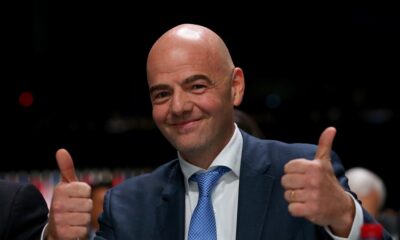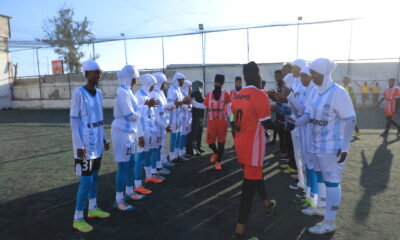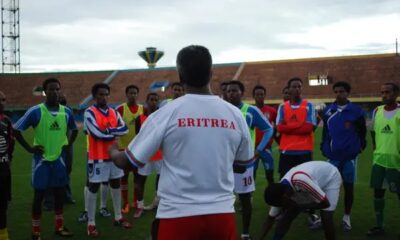FIFA
Infantino re-elected FIFA President

Gianni Infantino has been re-elected president for the Federation of International Football Associations (FIFA) for a second term in Paris on Wednesday.
The 49-year-old was the only candidate for the election and the traditional vote was replaced by a round of applause at FIFA’s 69th Congress. The Confederation of African Football (CAF) announced their support for Infantino’s re-election last year.
Infantino was first chosen as president in February 2016 following the major corruption scandal at football’s world governing body that led to the resignation of Sepp Blatter.
He was tasked with restoring FIFA’s reputation following the scandal that rocked the game.
Infantino used his opening speech to list his achievements since taking over at an extraordinary congress in 2016.
Reflecting on how far FIFA has come in three years and four months, Infantino said: “Today nobody is talking about crisis, nobody is talking about rebuilding from scratch, nobody is talking about corruption.
“We have turned things around. FIFA has gone from being toxic, almost criminal, to what it should be, an organisation that develops and cares about football.”
In his closing speech, Infantino thanked the delegates from FIFA’s 211 member associations for their support and promised he would ‘not stand still’ but would continue to develop the game and ‘defend football’.
His priorities would be the creation of more youth competitions, a continued push on women’s football, more investment in technology and the organisation of a ‘world convention on football development’.
CECAFA
2019 Busy year for Cecafa as Fifa boosts East Africa Region

Uganda will host this year’s Cecafa Senior Challenge Cup in December as Rwanda hosts the Cecafa Kagame Cup for clubs in July.
Kenya will host the region’s women’s under-17 tournament.
These were among the decisions that were passed at a consultative meeting of the Confederation of East and Central Africa Football Associations (Cecafa) members that was held in Addis Ababa on Monday on the sidelines of the African Union summit.

Fifa President Gianni Infantino speaks during the 32nd African Union (AU) summit in Addis Ababa on February 10, 2019. PHOTO | SIMON MAINA | AFP
The meeting was presided over by world football governing body, Fifa, President Gianni Infantino and Confederation of African Football (Caf) President Ahmad Ahmad.
Cecafa member representatives also attended the inauguration of the Regional Fifa Development Office in Addis Ababa.
The new office will cater for the development programmes of Cecafa and the North Zone, and will be the third regional office after similar offices were set up in Dakar and Johannesburg.
The main agenda at the meeting was the incorporation of new competitions, and members endorsed the hosting of a total of seven competitions in the Cecafa zone this year which will commence in June and run back-to-back to December.
The activities endorsed for this year and funded by Fifa are the Under-17 Challenge Cup in Eritrea, Under-17 Women’s Challenge Cup in Kenya, Under-20 Women Challenge Cup in Uganda, Senior Women Challenge Cup in Tanzania and Under-20 men’s Challenge Cup in Uganda.
With Kagame Cup getting sponsorship from Azam TV and its patron Rwanda president Paul Kagame, the members states agreed to contribute Sh 2 million (20,000 USD) each to a solidarity fund that will guarantee to the staging of the oldest tournament in the continent.
“The members resolved to ensure that they will contribute to a solidarity fund that will guarantee the staging of the Senior Challenge Cup annually,” Cecafa secretary general Nicholas Musonye said in a statement.
The Kagame Cup is sponsored by Azam TV and Cecafa Patron, Rwanda’s President Paul Kagame.
“During the same meeting, the members vowed to work hard to ensure that the zone is well represented at the forthcoming Africa Cup of Nations tournament in Egypt where Kenya and Uganda have already qualified while Tanzania and Burundi have equal chances of qualifying,” Musonye added.
In Addis, Infantino also addressed the African Union summit, the first time a Fifa president was addressing the AU which comprises of 55 countries and which is now chaired by President Abdel Fatah al-Sisi of Egypt.
FIFA
Qatar Ready for 2022 World Cup

A few years ago, Qatar were restless and not sure whether the FIFA 2022 was under their grasp. That was when there was uncertainty and clear threats on their ability to host a successful World cup.
Now almost nine years after being controversially awarded the world’s most prestigious event, Qatar are settled and more confident that they will host the World Cup and fulfil their dream of uniting the World.
The World governing body FIFA was riddled to the core when they announced that Qatar had won the Rights to host the 2022 extravaganza, and that decision went a head to threaten the very existence of the World’s biggest sporting organization.
The then Sepp Blatter led organization was accused of violating some basic principles in the award process and claims of bribery dominated the world headlines, culminating in the expulsion of the key players in the bid process – including Blatter himself. A host of other casualities are spread across the World, some suffering life bans from all football activities.
The challenges and threats that Qatar has endured since December 2 2010 when they were awarded the Rights to host the event, have been ernomous . The bid process was intense, expensive and cut-throat. The tiny Middle East Nation had to face a stiff challenge from the World powers who included USA, Australia, Japan and Korea – all claiming to have the power and resources to stage the event.
By the time Qatar was awarded the rights to host the event, the country’s population was just 1.6 million people. The other contestants were not ready to accept the verdict. And some of them are still not accepting that Qatar have the capacity and numbers to host the World.
Furthermore, Qatar believed to be in the middle of the World, had not qualified to the World Cup and had never hosted any other major global event and were lowly ranked 113 in the world.
They were regarded as the smallest country after Switzerland in 1954 to host the World Cup. These and other underlying issues, are some of the reasons that have continuously infuriated Qatar’s adversaries in the contest to host the World. Thus, they have persistently challenged Qatar’s credentials to host the World cup.
But despite their size and numbers, they positioned themselves as the first Arab nation ready to host the event and unite the World. Such kind of positioning could not even be received positively within the restive Middle East.
Despite the odds from within the neighbourhood and elsewhere, Qatar have shown their true character as an emerging nation ready to stage a compact World cup. For the past nine years, the country whose population has now hit 3 million have left nothing to chance despite persistent threats and challenges.
Blatter remarked when announcing Qatar’s winning bid:” The Arab World deserves the World Cup. They have 22 members within the FIFA family and have never had an opportunity to host the World Cup. Let Qatar do it.”
The remarks by Blatter, boldend Qatar, and the ruling elite have managed to pull all the resources to confirm that they are capable of providing a unique and compact World cup.
The restless critics of Qatar went further to claim that the Middle East country were not suitable to host the event in the traditional months of June and July, alleging that the temperatures would be impossible. By this time the temperatures could rise up to 50, threatening the health of players and spoiling the party for spectators.
This challenge has been a big concern to FIFA and Qatar with European countries claiming that any change of dates will result into serious litigations that could render FIFA broke and dead.
They claim that any change of dates would violate the leagues of Europe and rob them sponsorship money. However, before Blatter left the office, he had helped convince some European power houses that the month of November-December would be good for Qatar and a more pleasant summer for European nations to enjoy football in the Middle East.
The issue of the dates has been sorted out and now the World Cup will be staged from November 21 to December 18 and the temperatures in Qatar will present a suitable environment for all the visitors.
Even then, Qatar had plan B by constructing stadia with sophistigated cooling conditions powered by solar energy.
Other challenges presented and pursued by human Rights groups regarding labour conditions for immigrants and homo-sexuality have been dealt with.
What has Qatar done to convince the world of their capability ?.
The Qatar Football Association formed a strong committee known as the Supreme committee for Delivery and Legacy to ensure that the process of organizing the 2022 World cup is smooth and flawless.
The mandate of the Committee is elaborate. However it focuses mainly on the overall objective of delivery of a successful event and leave behind a legacy that will be remembered for years to come.
The committee formed by Emir himself is responsible for the construction of stadia, training grounds and the entire infrastructure that will see the 2022 World cup played without any hitch.
The infrastructure the committee has undertaken include roads, highways, bridges, underground tunnels, hospitals and Railways. To ensure that this is implemented successfully, all the relevant Ministries have been looped in to make sure that there is proper coordination and resources are mobilized collectively.
The key Ministries that have been engaged include the office of the Prime Minister and Ministry of Interior, Ministries of Finance, Planning/Municipalities, Youth/sports, Transport, Communications and ICT.
The stadia and training grounds
The most key infrastructure for football is the stadia. The little country of Qatar has over 12 international Stadia. But they have settled on eight venues as required by FIFA. The supreme committee which has overseen the renovation and construction of these stadia has set 2020 as the year all the venues will be ready for the World show piece. This will be exactly two years ahead of the event and that means, they will have ample time to test the reliability of the venues before the start of the World bonanza.
According to the Supreme committee, which reports direct to the Emir, the stadia have been fitted with modern and high level cooling systems which will be used incase the temperatures soars unexpectedly during the World cup.
Five of the eight stadia identified and approved by FIFA are ready, while the remaining three should fit for use by early 2020. The stadia that are going to used are:- The Lusail stadium is the biggest stadium in Qatar and has been ear-marked to host the opening and closing ceremonies and other eight matches. The stadium has a capacity to seat 80,000 people.
Al Khalifa and Al Wakrah Stadium have already been inaugurated and have been hosting exhibition matches that Qatar continues to stage in a bid to test their ability. The two stadia have reduced the seating capacity to 40,000.
Ras Abu Aboud Stadium, Qatar University Stadium, Al Bayt, Al Thamana and Al Rayan stadia are 80 per cent ready, but the Supreme committee want to improve on many areas to ensure that they are of high standards.
Some of the areas that have been given due consideration is the media facilities. Most of the stadia are already equipped with media facilities– computers, copiers, printers, WIFI etc.
The significant elements about these first class stadia is that the Supreme committee do not want to built white elephants as it has happened elsewhere especially in Africa.
Four of the stadia are demountable, meaning that they will be repurposed after the World cup and used for different purposes. These stadia have been built out of shipping containers and modular blocks that are easily demounted. According to Qatari organizers, these stadia will be used as malls, schools/colleges, museums, hospitals etc. The Supreme committee will identify poor countries lacking in infrastructure and deliver the demounted parts to those countries and assist in developing them into small stadia.
This is the legacy the 2022 World cup will leave behind.
Never before has FIFA done an inspection visit and left satisfied as they did in Qatar early this year. The challenge that FIFA has faced on many occasions is the low level of training grounds. Qatar has constructed over 30 natural grass training grounds – all situated near the FIFA approved stadia.
According to Mohamed Hassan Al-Obaidy, the Supreme committee project manager for training grounds, all the sites are ready. He took the guests and the media to the University of Qatar venue where there are six FIFA standard training grounds all fitted with facilities like sauna, Jacuzzi, gym, steam bath, offices, changing rooms, hot/cold shower etc.
“We have developed these model facilities all over Qatar and we want each team to have its own training ground,” he told the media as they toured the magnificent Qatar University complex.
Asked what will happen after the World Cup. He responded:” They will be converted to camps, training centres, clubs training grounds, Universities centres for sports etc. Nothing will be wasted. And that is the legacy we want to leave behind.”
According to the Supreme Committee, Qatar will spent a handsome USD 8.5 billion (ksh 850 billion) on stadia – money no other country has ever spent on stadia in the history of the world cup.
Transport fixed
Qatar Airways has strategically placed themselves in a vantage position as the line of the 2022 World Cup. Looking into the future, they have opened new routes to virtually all key destinations in Europe, Africa, Asia, South America and the Middle East. The Airline is projecting to reach 200 destinations by 2020 and increase its fleet to control the airspace beyond 2022.
Hamad International Airport in the centre of Doha is already overwhelmed with traffic, thus compelling the ministry of transport is renovate the old Qatar International Airport as a back-up even after World Cup.
Internally, the Government of Qatar has invested massively in the transport sector. Highways, fly-overs, bridges and underground tunnels are being constructed daily to ensure that there will be no traffic jams during the World cup.
But the most significant transport sector, the Government has invested millions of dollars is the Doha metro shuttle. According to the Supreme committee, the railway transport will be a key asset to the Qatari during and post world cup.
The train shuttle will connect all the stadia in Qatar and has already opened 37 stations across the country. By 2020, the Supreme committee envisages to increase the stations to 135 to cover all the country.
In a country where theft and fraud of public resources is severely punishable, the metro has cobbled several billions of dollars. But the supreme committee believes it is worth it, because, it will de-congest the roads and reduce the costs of road repairs and time wastage.
The roads and the metro has made the 2022 World cup compact because the longest distance between the stadia will be between 30-55 kms, while the shortest will be in the range of 5-6 kms. This means football lovers can watch two matches in a day in Qatar, unlike other countries where the distance from one venue to another could take about four to five hours by air.
Accommodation headache
FIFA demands that a country hosting World cup must quarantee a bed capacity of 90,000. Many countries in the World cannot secure such numbers. Qatar have confirmed that they have a capacity of 60,000 beds. The shortfall has enticed entrepreneuers to construct houses in readiness for the World cup.
But the supreme committee still believes that accommodation will not be a challenge. The secretary General of the Supreme committee Hassan Al-Thawadi told the media in Doha that there are special arrangements to hire cruise ships and also encourage guests to seek accommodation in desert camps.
Special cruise ships can have a bed capacity of 5,000-10,000 and this will also provide visitors an opportunity for adventurism and fun. However according to Thawadi, accommodation will be fixed before the time the world cup starts.
“We do not have a problem with accommodation. After all, spectators do not come at once and stay through-out. Some will come for a short period, while others will leave when their teams are eliminated. There should be no worry at all.”
Planting trees and protecting the environment
The supreme Committee of Delivery and Legacy are environmental conscious. The construction of roads, stadia and infrastructure in general has had an impact on the environment.
To ensure that the environment is restored and more is done to make Qatar green by 2022, the committee has embarked on a massive campaign to plant over 10,000 trees in the next two years.
Thawadi, who is the pillar of the committee noted that, all the projects that have been initiated in Qatar are not just for the World cup. “These projects were in our vision 2030. The World cup is only advancing the course”
He said that Qatar government is putting more emphasis on the environment and they are encouraging all Qataris to go green by planting trees.
He is quoted to have said that “ Qatari will be the greenest city in the Middle East because they are planting a forest in a desert.”
World cup is a festival
Qatar Government has acknowledged that World cup is a festival where people want to enjoy football and other “activities”. The country has some restrictions for entry through a tight visa regime and alcohol consumption. This will have to be addressed if the country wants to leave a mark as a good host.
In Germany 2006, English fans consumed all the alcohol in one of the cities before their semi final match against Portugal. The city cleaners took two days to clear the bottles on the streets and parking areas. The bar owners made a fortune on that particular day.
The issue of “good life” during 2022 has been raised by many stakeholders including FIFA who fear that there could restrictions on alcohol and other “night runs”.
The Qatari supreme committee has clarified that there will be alcohol on sale “at the right places” and visitors who drink will not be disappointed.
Show of might
On the occasion of the final of Emir Cup 2019 on 16th of May , the Supreme committee on Delivery and Legacy, demonstrated their show of might by inviting several hundreds of dignitaries, legends and the media to show case their readiness to host the World.
In a colourful ceremony that also marked the grand opening of Al Wakrah stadium, the Supreme Committee organized a garland opening ceremony that had some semblance of a world cup show.
This grand rehearsal was graced by legends like Samuel Eto’o, Louis Figo, Ruud Gullit, Pablo Zabaleta, Cafu etc. The occasion was the final of Emir cup, but the true intention was to assemble these celebrities as a testimony to tell the World that Qatar is ready. And indeed they are.

In Pictures:
Cecafa secretary General Nicholas Musonye and legend Samuel Etoo of Cameroon were some of the guests during the inauguration of Al Wakrah Stadiium in Qatar
The Writer is the Secretary General of CECAFA and a journalist.
FIFA
Somali president extols FIFA

-

 CECAFA10 years ago
CECAFA10 years agoBotswana beats Kenya in African Youth Championships
-
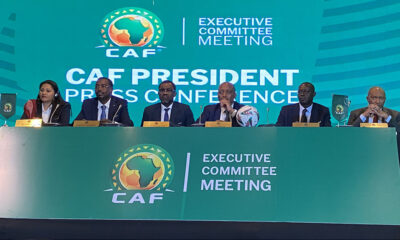
 CAF African Nations Championship9 months ago
CAF African Nations Championship9 months agoAfrican Nations Championship 2025 dates announced
-
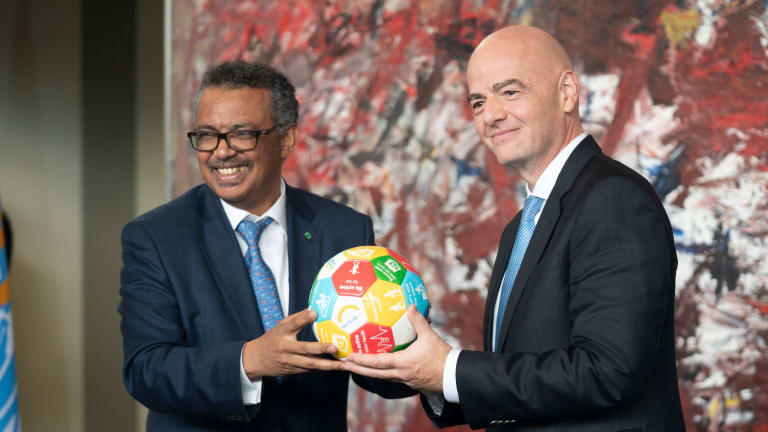
 Top stories5 years ago
Top stories5 years agoWe need to win the first match against Coronavirus – Infantino
-
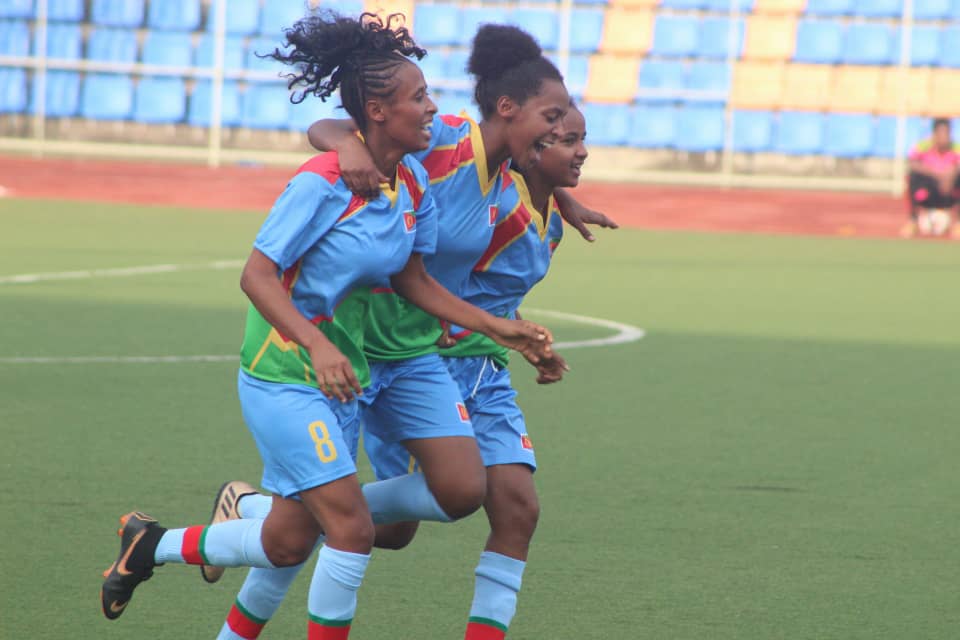
 NEWS4 years ago
NEWS4 years agoFIFA U-20 Women’s World Cup qualifiers: Eritrea ejects Djibouti 6-1 on aggregate
-
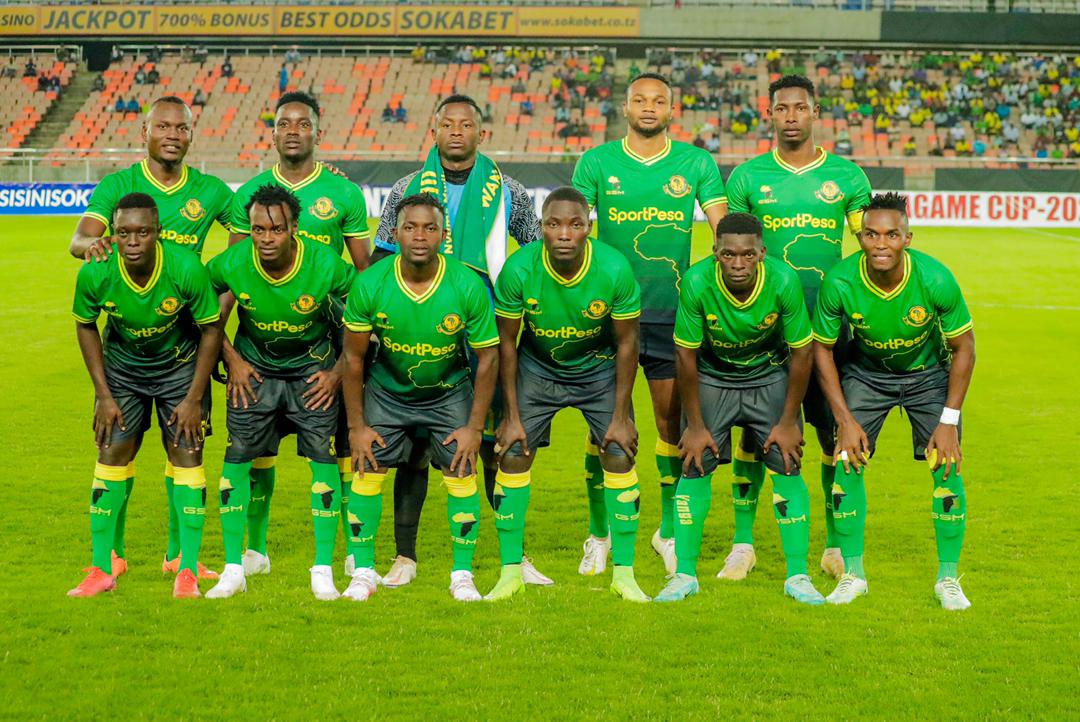
 NEWS4 years ago
NEWS4 years agoYoung Africans SC face Nyasa Big Bullets in CECAFA Kagame Cup kick-off
-

 CAF Champions League2 years ago
CAF Champions League2 years agoTanzania’s Simba Sports Club exit CAF Champions League at quarter final stage
-

 CECAFA6 years ago
CECAFA6 years agoCecafa mourns former chairman Tesfaye Ghebreyesus
-

 CECAFA U-18 Boys Championship2 years ago
CECAFA U-18 Boys Championship2 years agoSemi-final stage set for CECAFA U-18 Championship 2023






